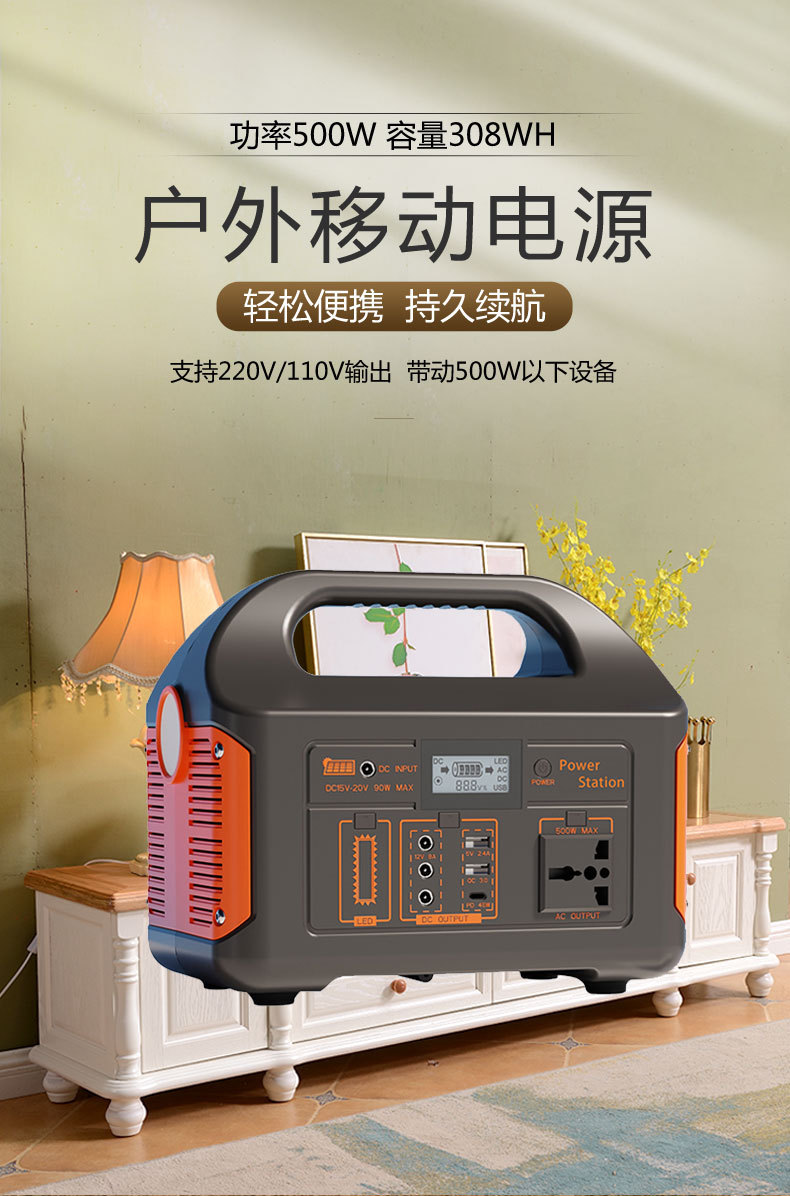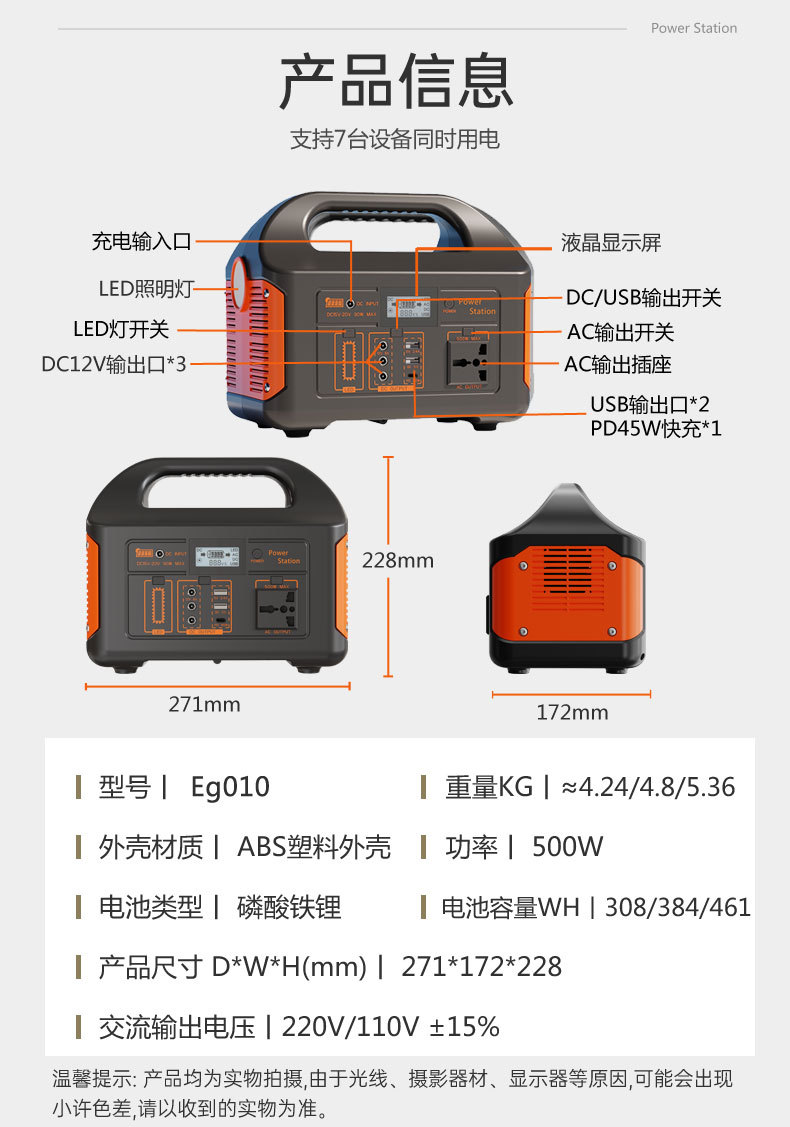The inverter in the portable power station is one of the core components. Its main function is to convert the direct current (DC) output by the energy storage battery (usually a lithium battery) into alternating current (AC) for use in various household appliances or electronic devices. The following is a detailed analysis of its working principle:
I. Core composition and basic principles
1. DC input stage
·Power source: Energy storage battery (such as 12V/24V lithium battery pack) provides stable DC power.
·Pre-processing: Some inverters will first filter the DC input (such as removing clutter through capacitors and inductors) to ensure the purity of the input power.
2. Inversion process (DC→AC)
·Main components: Through the high-frequency switching action of power switching devices (such as IGBT, MOSFET), the DC power is "cut" into a pulse waveform.
·Key circuits:
·Full-bridge/half-bridge topology
·PWM modulation (pulse width modulation)
3. Filtering and waveform shaping
·Remove high-frequency harmonics
·Waveform type:
·Modified sine wave (square wave): low cost, but the waveform distortion is large, which may cause damage to some precision equipment (such as motors and transformers).
·Pure sine wave: The waveform is almost the same as the mains, suitable for all electrical appliances, and is the mainstream choice for high-end portable energy storage power supplies.
4. AC output stage
·Voltage matching: adjust the voltage to the target value (such as 220V or 110V) through a transformer (or electronic voltage regulation).
·Interface output: power the device through an AC socket (such as a national standard or American standard jack), and some models support multiple interfaces for simultaneous output.
II. Key technical points
1. Switching frequency and efficiency
·High frequency trend: Increasing the switching frequency can reduce the size of the transformer and filter and improve portability, but it will increase the switching loss (heating), which needs to be balanced through heat dissipation design (such as aluminum housing, fan).
2. Waveform quality (THD total harmonic distortion)
· Advantages of pure sine wave: THD is usually less than 3%, close to the mains standard, and can safely drive motor equipment (such as air conditioners, water pumps), inductive loads (such as transformers) and precision electronic equipment (such as laptops, projectors).
· Limitations of modified sine wave: THD is high (10%~30%), which may cause heating, noise or damage to the equipment. It is only suitable for resistive loads such as incandescent lamps and electric kettles.
3. Load adaptability and protection function
· Overload protection: When the load power exceeds the rated power of the inverter, the output is automatically cut off to avoid component burning.
· Short circuit protection: When a short circuit is detected at the output end, the switch tube is quickly turned off to prevent battery overcurrent.
· Temperature protection: The temperature of the internal components is monitored by the temperature sensor, and the frequency is reduced or shut down when overheated.
3. Collaboration with energy storage power supply
The inverter needs to cooperate with other modules of energy storage power supply to realize a complete power supply system:
1. Battery management system (BMS): monitor battery status (voltage, current, temperature), prevent overcharge and over discharge, and provide stable DC input for the inverter.
2. Energy management system (EMS): coordinate the energy flow of charging (such as solar panels, mains input) and discharging (inverter output) to optimize efficiency.
3. Multi-mode switching: Some high-end models support "UPS mode", which automatically switches to battery + inverter power supply when the mains power is interrupted to ensure uninterrupted operation of the equipment.

